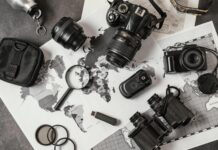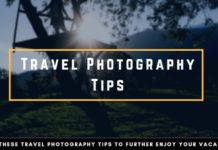Are your studio portraits not coming out as you would like? Then follow these tips to get the most out of your studio setup.
1. Set the right shutter speed for your camera.
Hand-holding a camera is more challenging. Make sure the shutter speed doesn’t cause camera shake. If in doubt, remember the old rule: Never use a shutter speed slower than your focal length. If you have a 50mm lens, for example, do not go below 1/60.
You can choose whether you want ambient light to have strong effects when using flash. You can have both flash and ambient lighting in your final image by setting your shutter speed lower than the synchronization speed (generally 1/250) and “dragging” the shutter. A slower shutter speed allows ambient lighting and flash to mix. You only need the flash to be visible, so aim for shutter speeds closer to your flash’s synchronization speed.
2. Select the best ISO and aperture for portraits.
Start by “zeroing out” your camera. Then, set all controls from scratch. You can use f/5.6 if you are shooting over 85mm. Usually, lenses produce the sharpest images at f/8, which is the preferred setting. You should be able get sharp focus from the subject’s nose to their ears. Strobe lighting is best for commercial portraits. This allows you to use the entire film speed range (ISO) when shooting. To maximize image quality and minimize noise, set your ISO to the lowest possible setting.
3. This Go-to-lighting setup is perfect for full-length portraits
For even lighting coverage, use large light modifiers (softboxes) that are set back from your subject. For a uniform lighting distribution, use a softbox measuring 4×6 feet. A secondary light source behind the subject can be used to highlight edges and provide highlights. This way, You can lit the subject, as well as the photography backdrops evenly.
4. Get the most out of umbrellas
Silver lining umbrellas reflect more contrast light than white umbrellas. Silver umbrellas are more efficient and can get more light from the same power setting. Today we don’t care about power loss, but it is important to keep your light source soft and flattering. If your budget only allows for one umbrella, then go with a white one. Need more contrast? Move the umbrella farther away from your subject.
5. Practice these clever ideas – practice makes perfect.
You can practice in a variety of ways. You can make your camera your model by using the self-timer mode. This allows you to experiment and shoot as much as you like. You are always available and can probably take your own direction.
Place a lightstand in the shot, then set your camera to manual focus to lock the focus on the lightstand. Next, trigger the self-timer to walk over to the lightstand. Then move the lightstand and take a test shot. Once you have your focus set, you can place a spot on the ground to get repeatable focus.
An infrared remote, or a long cable can be used to trigger the camera. This is easier and allows you to try different poses before returning to the camera to view what you have.
A used mannequin can be another cheap option. You can make it look any way you like.


































